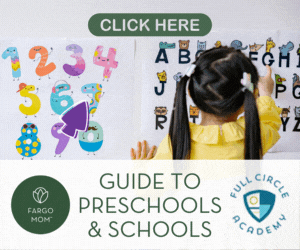We all want our children to be well-adjusted, kind, and empathetic. But raising an emotionally intelligent child can be difficult. Especially on those days when deadlines are past due, bills are piling up, and sleep is in short supply. Some days it can be tough just to regulate our own emotions, much less those of our kids. And sometimes the easiest solution seems to be a “timeout” to stop the endless meltdowns.
But what if there is a way to parent your child positively and establish a routine of time-ins rather than time-outs, all while building your child’s emotional intelligence? I explored the concept of positive discipline by looking into Generation Mindful.
Developing Emotionally Intelligent Kids
Generation Mindful teaches parents how to raise their children to develop emotional intelligence. This helps kids to grow into a generation of mindful people.
It has been found that emotional intelligence, and it is the strongest predictor of a child’s future happiness and success.
I reached out to Suzanne Tucker to learn more. She is a Midwestern mom, 27-year Parent Educator, and Founder of Generation Mindful.
Here are some of her insights.
Positive Parenting Techniques:
What is emotional intelligence? How do you raise an emotionally intelligent kid?
Suzanne: Emotional intelligence (EI) is a set of skills that help us in the many ways we interact with other people in the world around us. Simply stated, it is the things we see in the world and do in the world: self-care, social skills, self-awareness, and awareness of others.
EI begins in infancy when babies bond with caregivers and learn that people will respond to them when they cry or smile. As a baby grows, they become more aware of emotions, gaining the ability to name them, respond to them, and eventually regulate them.
Emotional Intelligence and Development
Because the part of their brain that is responsible for emotional and executive function is early in development, children outsource their ability to regulate to us as the adult in their lives until they learn the skills to do so for themselves.
And because we all have mirror neurons, children learn best by what we do, more than what we say. So one of the best ways to teach emotional intelligence is to model it yourself. When you feel mad, sad, frustrated, or even happy, name that sensation. Then identify the emotion, and when needed, choose a calming strategy.
These are the same steps to teach children. Just as with any skill, the best way to develop emotional intelligence is to practice, and I have found that consistency and playful ritual are paramount to be both proactive and responsive to behaviors in a way that is backed by science and intrinsically motivating for the child. It’s your relationship, words, and love that bring all the tools to life as you lead through connection to guide and teach your child.
What’s the difference between time-in and time-out? What are the pros and cons of these two?
Suzanne: Time-outs are classically when parents place children in forced isolation for misbehaving. Saying something like, “You need to sit on the step or in this chair, etc. until I say you can get up.” As parents, we hope that this approach will be effective in modifying behavior. So that our child sits and thinks about what they did wrong and how they can do it differently next time.
But research shows that this is not what actually happens. As any child who has ever been made to sit in isolation when they are already upset or overwhelmed can tell you, instead of teaching and reinforcing what we as adults want children to learn, unfortunately, this widely practiced approach is merely a punishment, missing the learning opportunity misbehavior presents to us as parents.
Misbehavior
When children misbehave, they are usually dysregulated. Misbehavior is a sign of an unmet need; that your child is having a hard time managing the sensations and emotions within them. This can feel scary to them, which will tip them into one of three survival states: fight, flight, or freeze. It can be easy to think our children are giving us a hard time, but science tells us that they are actually having a hard time.
When we meet our children where they are in the face of big emotions, we reinforce that who they are is not defined by their behavior. We can teach them important life skills such as self-awareness, empathy, impulse control, problem-solving, and more.
Time-Ins
And this is where the time-in comes in. Time-ins are a way to help children learn how to notice and process their emotions in a safe space (or “Calming Corner”) and offer learning moments to practice these higher-level skills. Just as we would teach ABC’s and 123’s, we can teach children social-emotional regulation. With time-ins, the learning comes from connection, guiding, modeling, and teaching to co-regulate rather than isolation, where the child is left alone amidst overwhelming feelings to figure it out him or herself.
How would you handle a meltdown?
Suzanne: The answer always starts with me/us as adults. I like to begin by asking myself, “How am I feeling? Am I breathing?” How can I help my child regulate if I am dysregulated myself? So before I correct or discipline my child, I take a moment to notice and honor any feelings or triggers that I am experiencing. I then practice calming my body in the same ways I will be asking my child to practice if they are upset.
When I feel centered, I am better able to be with what is happening, rather than coming into the situation with my perceptions and charged-up emotions. I can respond instead of reacting.
From there, I communicate safety to my child by getting eye level or lower. And depending on the situation, I may offer a simple, “You are safe,” or a touch of my hand. Children who feel safe can then move from their reactive brainstem to the next part of the brain, the limbic system, known as the emotional part of their brain.
When children are in the “limbic,” they want to feel connected. To be seen and heard. “Name it to tame it, and feel it to heal it” is a mantra I repeat. This means validating and empathizing with my child’s emotions, giving words to label and embody their feeling. And makes so simple and almost routine for our children and adults who are not always taught the skills.
Validating Emotions
All emotions are sacred and useful. While we may not like the behavior we are seeing, we can always validate the emotion underneath it.
Usually, as a child starts to shift out of the limbic brain, you will see them take a breath and calm as they move into their prefrontal cortex. This is an indication that they are more receptive to learn.
So, if I have a lesson to teach: i.e., not clobbering your brother when you want a toy, I do it here in the connection of a time-in when my child’s brain is regulated. This is a moment to explore what happened and nurture emotional intelligence, problem-solving, communication skills, etc. If needed, it is a perfect time for the child to practice making amends.
Growing as a Parent
As parents we are always striving to do the best that we can for our kids. To help them become emotionally intelligent through teaching and also leading by example. Because the values and lessons we teach our children will be the basis of their adulthood in the future.
How do YOU manage your child’s meltdowns? Share your tips with us below!













